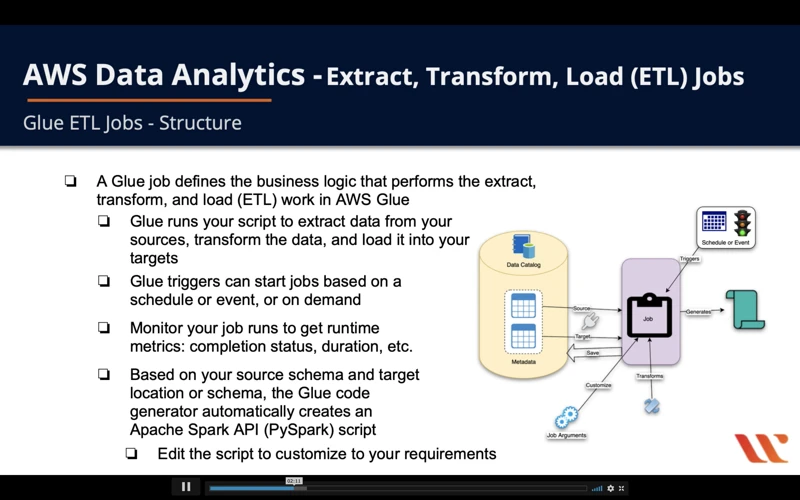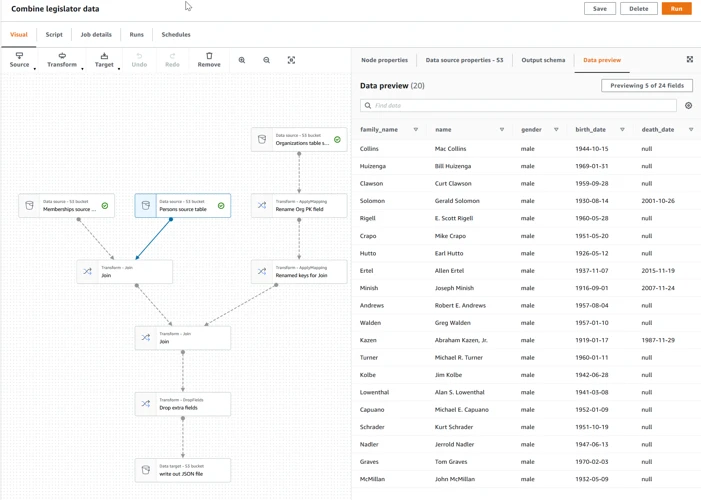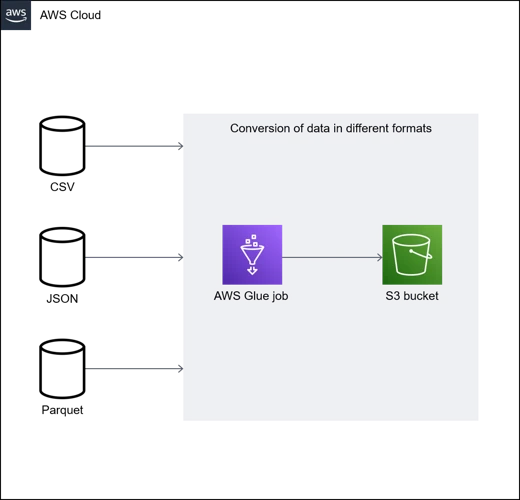Data integration is a critical part of any data workflow, and AWS Glue Jobs serve as a powerful tool to streamline these processes. AWS Glue is a fully managed extract, transform, and load (ETL) service that simplifies the arduous task of preparing and transforming data for analytics. By setting up a glue job schedule, businesses benefit from the automation of data pipelines, ensuring consistency and efficiency in their data handling.
Understanding AWS Glue Scheduler
The aws glue scheduler is a robust feature within the AWS Glue service that enables users to automate their ETL jobs. This scheduler relies on cron expressions to define the timing of job executions, thus facilitating precise scheduling to fit various business needs.
Cron Expressions in AWS Glue
Cron expressions are strings composed of five or six fields that represent a set of times, using specific patterns. In AWS Glue, these expressions dictate when and how frequently ETL jobs should run. They’re integral to implementing a scheduled ETL strategy.
Wildcards and Special Characters
When crafting a cron expression, wildcards and special characters hold significant importance. They enable more dynamic scheduling options, allowing for intervals, specific day execution, and more. Understanding these elements is key to leveraging the aws glue scheduler effectively.
Limits and Boundaries
While cron expressions offer flexibility, they come with their own set of constraints. AWS Glue imposes certain limits and boundaries on scheduling to maintain system stability and performance. Being aware of these restrictions is crucial to avoid scheduling conflicts and potential errors.
Examples of Cron Expressions
To illustrate how cron expressions work within the AWS Glue context, let’s consider a few examples. These will demonstrate how to define different schedules, from daily to monthly job executions, ensuring that users can tailor their glue job schedule to their specific requirements.
Prerequisites for Scheduling Glue Jobs
Before diving into how to schedule glue jobs, it’s essential to ensure all prerequisites are met. This includes proper IAM roles, necessary permissions, and a clear understanding of the data sources and targets involved in the ETL process.
How to Schedule Glue Jobs
Learning how to schedule glue jobs is straightforward once you become familiar with the AWS Glue interface and its scheduling features. Automation can be achieved with a few clicks, allowing you to focus on more strategic tasks.
Step-by-Step Guide
A comprehensive step-by-step guide will walk you through the entire process of setting up a job within the AWS Glue service. From defining the ETL script to the final schedule confirmation, each step is crucial for successful automation.
Creating and Configuring the Glue Job
The first step in automation is creating and configuring the Glue Job. This process involves selecting the appropriate data sources, defining the transformation script, and configuring the job’s runtime properties.
Setting Up Triggers for Job Scheduling
Once the job is configured, the next step is to set up triggers. These triggers are what tell the AWS Glue Scheduler when to initiate the ETL tasks, based on the cron expressions defined.
Automating Glue Jobs with CloudFormation
For those looking to automate the setup of AWS Glue Jobs, CloudFormation presents a powerful infrastructure-as-code solution. It enables the scripting of AWS resources, including ETL jobs, for more streamlined deployment and management.
Defining a CloudFormation Glue Job Resource
Within a CloudFormation template, one can define a cloudformation glue job resource. This includes specifying the job’s properties, such as the ETL script, data sources, and targets, as well as the execution role.
Specifying the Schedule in CloudFormation
To automate the scheduling within CloudFormation, the template must include the job’s trigger definitions. This is where you specify the cron expression that dictates the glue job schedule, ensuring that the job runs as intended within the AWS ecosystem.
Best Practices for Glue Job Schedules
Adhering to best practices is essential for optimizing the scheduling of AWS Glue Jobs. This encompasses efficient resource utilization, error handling, and aligning job schedules with data availability and business cycles.
Troubleshooting Common Scheduling Issues
Even with a well-planned schedule, issues can arise. Understanding the common scheduling problems and knowing how to troubleshoot them is fundamental to maintaining a smooth ETL operation within AWS Glue.
Monitoring and Logging for Scheduled Glue Jobs
Effective monitoring and logging are crucial for any automated system, and scheduled Glue Jobs are no exception. AWS provides tools to track job performance and log data, which are indispensable for maintaining oversight and ensuring accountability.
Conclusion
In conclusion, the aws glue scheduler is a robust feature that simplifies the process of managing ETL workflows. By leveraging scheduling, businesses can automate their data pipelines, resulting in more efficient and error-free operations.
If you’re delving into the world of AWS Glue and looking to understand how to optimize your data processing workflows, scheduling Glue jobs is a fundamental skill you’ll need to master. For a more comprehensive grasp on AWS Glue, you may also be interested in learning about passing parameters to your jobs for dynamic processing. Our guide on how to pass parameters to a Glue job can provide you with step-by-step instructions on this topic. Additionally, if you’re curious about the best practices for storing your Glue scripts and dependencies, take a look at our article on how to store Glue. And for those of you who apply the concept of ‘glue’ more literally in the world of carpentry or DIY projects, our tips on how to glue furniture might come in handy for your next craft or repair job.
FAQs on Glue Job Scheduling
Common questions regarding scheduling in AWS Glue often involve cron expressions, best practices, and troubleshooting. Addressing these FAQs helps users better understand how to utilize the AWS Glue service to its full potential.



